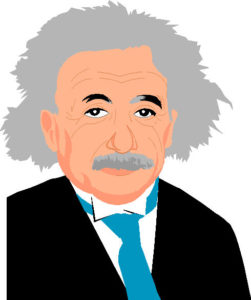
Change is good!
You know the old saw:
“If you always do what you’ve always done, you’ll always get what you always got.”
Or, attributed to Albert Einstein, “Insanity is doing the same thing over and over and expecting different results.”
Dealing with your dog is no different. If something you’re doing isn’t working, it’s time to change it.
Each dog presents his or her own challenge in training
Every dog is different, presenting their own joys and challenges. When you have a multiple dog household, it’s even more important to recognize each dog as an individual and adapt to their specific personalities.
Torque, Hope’s French Bulldog, is five years old. He’s an exuberant dog who loves training, treats, playing with toys, cuddling, and is obsessed with barking at the dogs in neighboring yards. In a densely-populated urban area, barking at the neighbors isn’t acceptable behavior.
It also doesn’t help when one of those neighboring dogs has a history of charging the fence – bashing into it while barking ferociously. Those neighbors, through the use of unknown methods, get Chloe to return to them after that initial charge, and then retreat into their house. Which leaves us to deal with the fired-up, obsessed Frenchie, plastered nose-to-fence looking for his nemesis.
Dogs do what rewards them
Dogs always do what’s most rewarding to them. If they enjoy something, they’ll repeat it. The rush of adrenaline Torque gets from the excitement of the neighbor-dog challenge is a tough one to beat. Torque has to choose us, and what we’re doing, over the thrill of the chase.
It’s an ongoing process. Our initial reaction to the situation was based in our decades of other kinds of training. We tried to manage the situation by putting Torque on leash for every foray into our own yard. Needless to say, that got tiresome and we got lazy.
We got smarter in our dog training methods
We’ve finally wised up and changed our training method. Torque absolutely adores training sessions and is highly motivated to “do stuff” with us. Instead of yelling, or pulling on him, or shouting “leave it,” we go into training mode. You can’t train a dog that isn’t paying attention, so we get into his line of sight, quietly saying his name. Just like beginner attention training, any glance at us gets a treat. Any cessation of barking gets a treat. Coming toward us, even a single step, is rewarded.
We changed it and we’re getting there
And it’s paying off. While we haven’t achieved ignoring the fence-bashing black Lab on one side, we’re starting to disregard the vocal Husky on the other. An initial “woof” will be followed by a half-turn away. And, just this morning, Torque actually managed to turn his back on the provocation and “attend to business” in the yard.
Don’t get down on yourself for allowing your dog’s questionable behavior to persist. Get creative about changing it. Take advantage of your dog’s “favorite things” and use them to get a different result both of you will enjoy. Stop the insanity.
